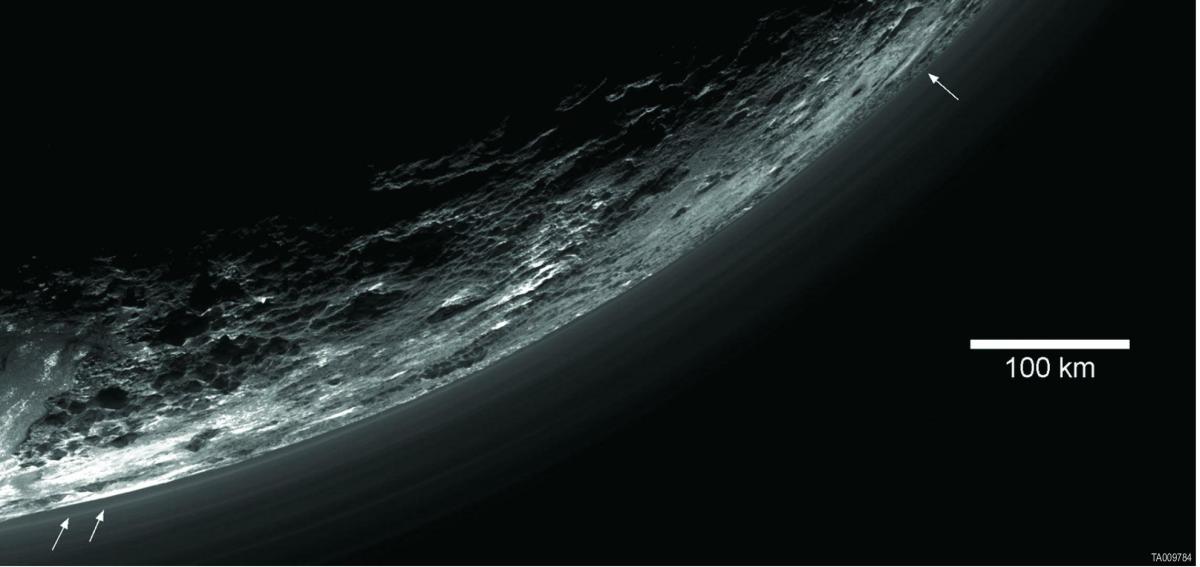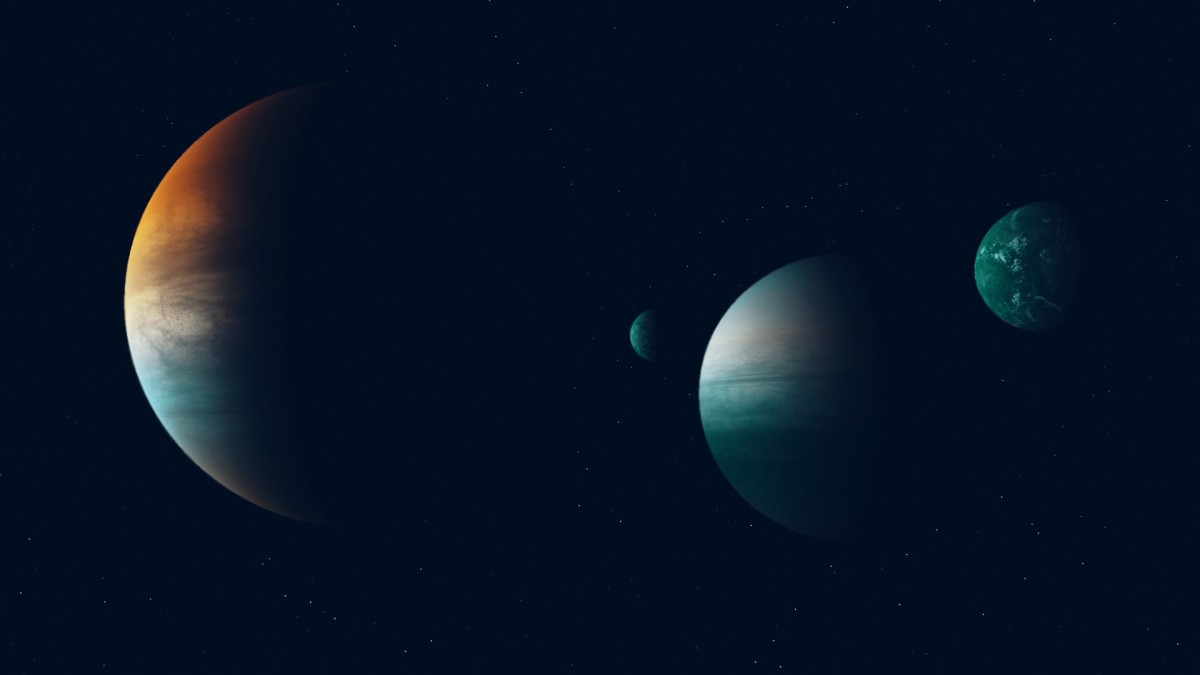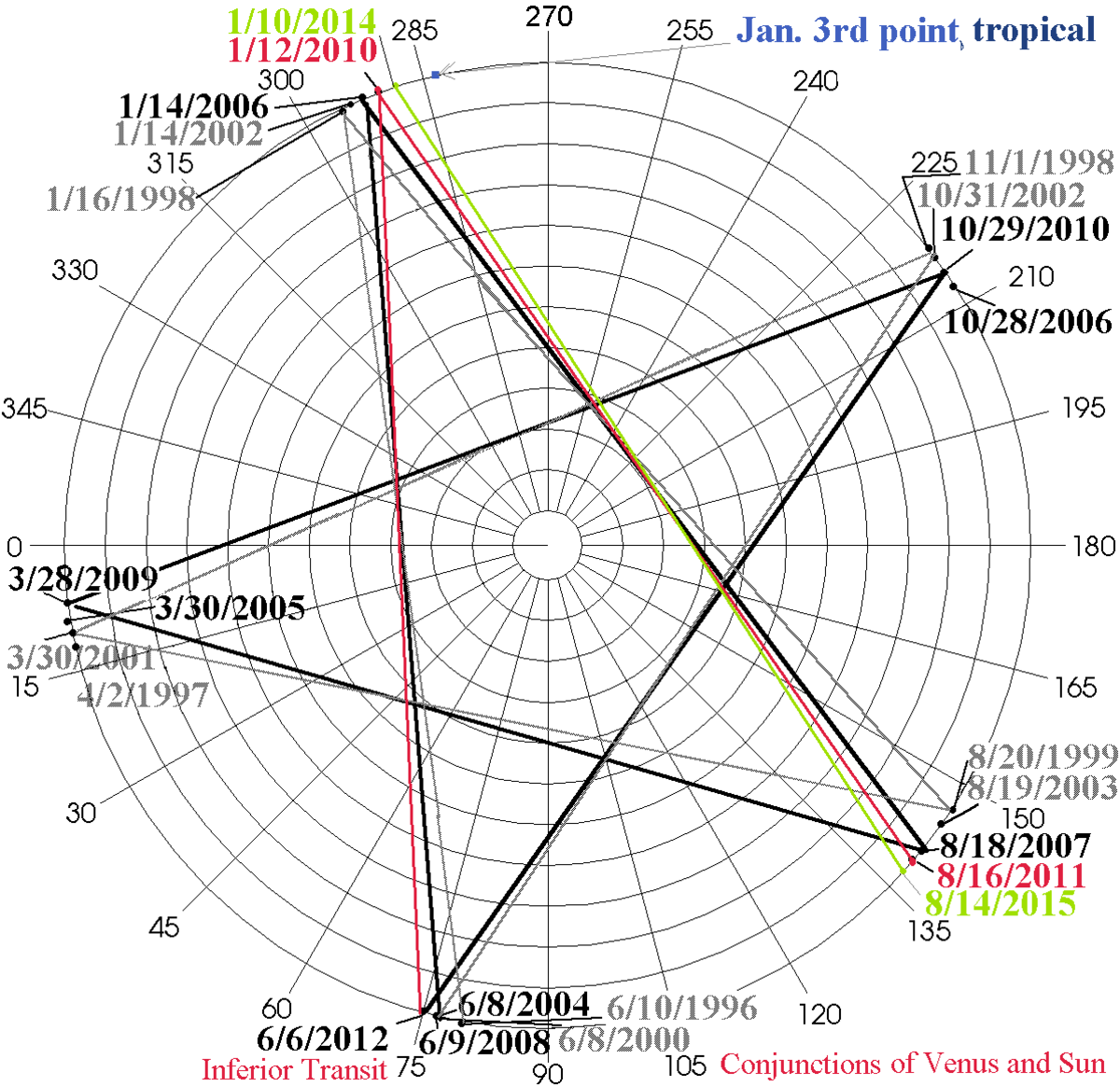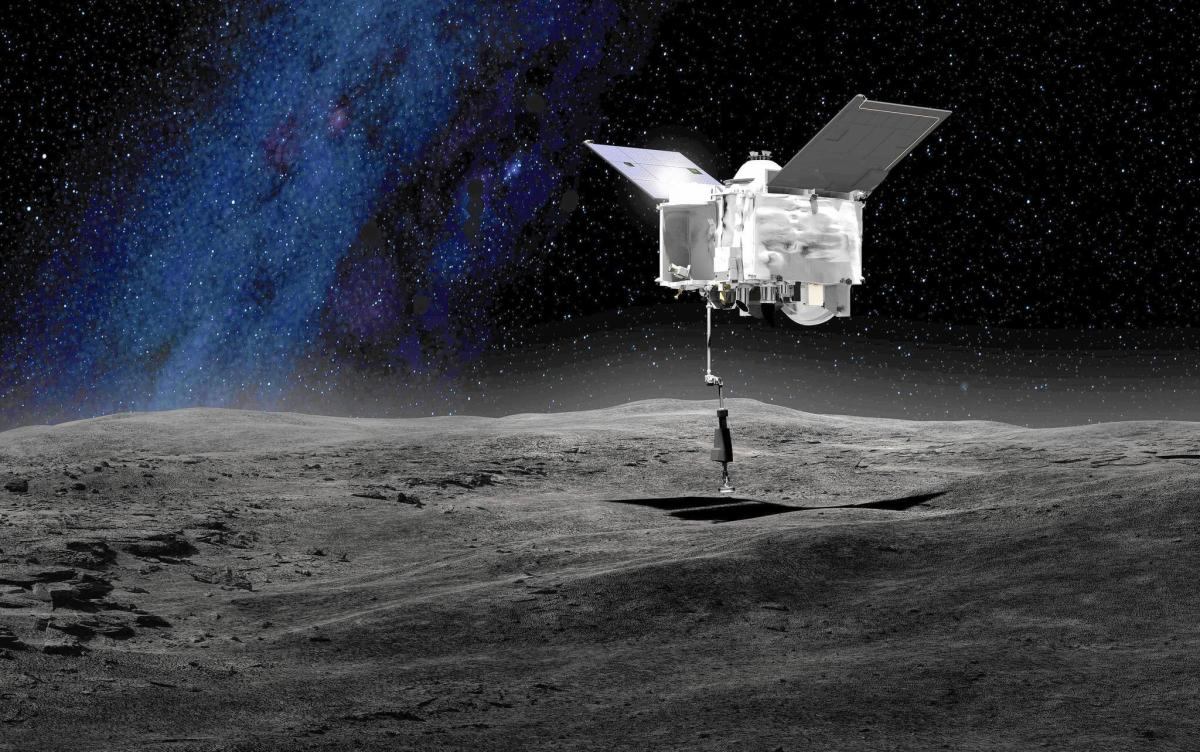Why Humanity Should Fear Impacts
Comets are a lot more common than most think
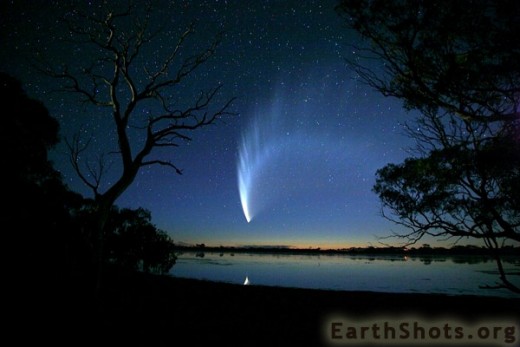
Impact: Junctions of Destruction & Creation
Myth and legend tell us of great catastrophes that stand at the juncture of world ages, between destruction and creation events. These are the tales of great events that fill the pages of the Bible and are passed by word of mouth through countless generations to the present day. Great upheavals are the stuff of these legends. Civilizations are wiped out and humanity totters on the brink of oblivion.
The laws of astrophysics tell us that the evolution of planet building must necessarily include impact accretion of all sizes. From the gentle falling of cosmic dust to planet shattering impacts of competing planetary bodies in fatal orbital resonance, the norm is for the gathering of dust motes and larger pieces into even larger bodies. There is no escaping this reality. It is the natural evolution of celestial bodies that is in operation. Impacts are a fact of nature.
Dotted about our planet, more so on the moon and every other body that sustains the evidence are the remnants of fateful and destructive encounters between orbiting bodies. Craters upon craters and within craters dot most bodies of all sizes that are not geologically active or have dynamic weathering. The moon, our closest neighbor, is a body that has as its dominant feature, craters in abundance. Other than craters, there are gigantic regions of ancient basalt like lava flows that have solidified. Even these are peppered with craters. The Earth has them too, but most have been obliterated except the largest and the newest ones. Further, most are on the ocean floor. Other moons and planets are similarly covered from pole to pole. This constitutes the physical evidence.
Events in history that have been recorded are further evidence. On June 30th, 1908, a near impact over Siberia in the Tungeska region flattened over a thousand square kilometers of forest. The air burst explosion registered on barometers as far away as Great Britain. The nights immediately after the explosion had a pinkish glow that was strong enough to read a newspaper by. It is now though that the culprit was a broken off piece of comet Enke. Had this occurred in a mere few hour difference, it could have exploded over a major city, wrecking extreme havoc and destruction. Another event occurred over Wabar in Saudi Arabia. Still another occurred over the Amazon basin in the August 13th, 1930 that scorched a considerable area.
Since the inception of NORAD and other like facilities, there have been recorded atmospheric explosions about the size of the Hiroshima atom bomb on average of once a fortnight over the duration of their existence and observation to today. Over 250 events of this type have been observed (1998). Missions by the space shuttle and satellites have revealed that the Earth is constantly being pelted by cometary and meteoric debris, which give away their presence by flashing momentarily. A short film of this bombardment is reminiscent of carpet-bombing missions in major wars with the frequency of flashes.
There is also plenty of evidence to indicate the break up of objects in the atmosphere, or the fact that many bodies are loose rubble piles. The Henbury craters in Australia are several craters in a strewn field. In 1947, several dozen small objects that left many craters in an elliptical strewn field hit Siberia. So, the Earth is often pelted with the equivalent of buckshot as opposed to a single penetrating bullet. Sometimes the strewn field will even take on the appearance of chain craters strung out like a string of beads. There are times where a single object will split up in the atmosphere just before impact as witnessed in the Amazon in 1930.
The Earth is being pummeled, mostly by small debris. Occasionally a monster falls out of the sky and changes everything. One or more of these did in the dinosaurs nearly 65 million years ago. Presently four craters are traced to that era. More recently, we have the Barranger crater, Wabar, Tungeska and a host of smaller impacts. Astrophysicists have calculated that the Earth experiences an impact of sufficient magnitude as to destroy a civilization and cause some extinctions once every 5,000 to 7,000 years when averaged out. This figure was arrived at by analysis of the lunar surface and extrapolating that figure to the Earth's surface and dividing it by the age of the Earth. Curiously, the Biblical period given as time of the Earth's existence is 6,000 years. This fits neatly between the two limit figures found by science. The Bible also describes horrific events in its pages and ascribes these to the intervention of Yahweh or Jehovah, who Christians call God. There is strong evidence therein, of several creation events.
Comets have long held a fascination to humanity. There has existed for most of history, a dread of comets and their appearance in the sky. Gradually humanity lost that fear, but new findings are reviving it. Many comets have meteor showers associated with them that are prominent on certain days of the year. Comets are known to be composed of mostly volatile materials and weak in composition. They have as their place of origin, the Oort cloud beyond the orbit of Neptune. Neptune captures some of these objects and drags them into the solar system, where they are passed from planet to planet until some of the become Earth crossing comets. Among them are;
Enke with a period of 3.28 years and a perihelion distance of .331915 AU
Halley with a period of 76 years and a perihelion distance of .587104 AU
Swift-Tuttle with a period of 135.01 years and a perihelion distance of .958220 AU
Honda-Mrkos-Pajdusakova with a period of 5.30 years and associated with Jupiter
Temple-Tuttle, which orbits in 32.92 years and is a Uranian member.
Phaeton, considered being an asteroid with conditions orbiting in only 1.43345 year as an Apollo object.
There are millions of objects of all sizes and types in our vicinity.
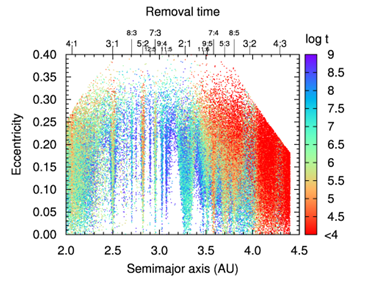
Comet Enke is currently responsible for the Taurid showers and it is phase locking with Jupiter, which it approaches near its aphelion. Jupiter causes the orbit to precess over a 7,000 year period. During this cycle, one or the other node of the orbit crosses the orbit of the Earth, giving four such events as the orbital planes intersect exactly at Earth's orbit. Comet Enke is thought to have entered the inner solar system 20,000 years ago, where it broke up into a long train of objects that now spans the entire orbit. This is demonstrated by the annual Taurid meteor showers and events like the June 30 1908 Tungeska event and an impact observed on the moon in late June of 1178. Today, Jupiter and Enke have a phase locking orbital period relation near 13:47. It is a close relation, as 47 Orbits of Enke take 154.16 years. Thirteen orbits of Jupiter take by comparison, 154.1826 years. The original relation may have been closer to the 1:4 resonances between Enke and Jupiter. But, that was 20,000 years ago and Enke was likely much more active than now, complicating the orbital dynamics. Enke is a small body and is much more easily influenced by Jupiter than a larger body. The mechanics of the interplay of the two bodies cause Enke to interact with the Jovian gravity once every 154.16 to 154.18 years. Jupiter pulls one or more of the many pieces of comet Enke back slightly towards itself. The result is that the orbital profile of the myriad pieces of various sizes takes on a Henon profile. Thus, when the Earth traverses the many orbits, the Taurid meteor shower can go on for days, heightening in the middle. Over all, the orbit precesses as the larger pieces are pulled toward Jupiter once every 154.16 to 154.18 years. The new orbit then takes a different perihelion point and the comet piece(s) pass close to the sun (.332AU). This is within the orbit of Mercury. Relativistic effects also cause the orbit to precess. The same thing occurs with Mercury's orbit as the planet passes between aphelion and perihelion. Mercury's orbit takes 100,000 years to complete a cycle. Enke's orbit takes only 7,000 years, primarily due to Jupiter's influence, then to Mars', Earth, Venus and Mercury in a complex dance of bodies. In addition, the comet pieces out-gas in a quasi-periodic and unpredictable fashion. During this time, the nodes of the comets orbit intersect some four times at the ecliptic where the Earth's orbital path is located. Today, we are nearing an end to one of these contacts. The result has been events like Tungeska.
In addition to the Jupiter influence, is the obvious influence of the Earth. Here we witness an exact discrete cycle of 25 orbits of Enke to 82 years of Earth. The complex variation can be expected to wax and wane over cycles of 82 years until the Earth in again completely out of the Taurid stream. What this may mean is that Tungeska type events can be separated by gaps of 82 years to almost a day. The added condition is that a large piece must arrive at Earth on or about June 30th, once every 82 years. Of course, not every 82-year cycle will deliver a punishing blow. That depends on whether or not a piece is located in the precise part of the orbit to impact. The last time the cycle came due was on June 30th, 1990. The next one may be due on or about June 30th, 2072.
Next in the line of influence is Mars, which forms a ratio of 7:4 with Enke's pieces. The difference is between 13.12 years and 13.167 years. When the pieces pass near Mars, they are pulled forward a little. But Mars' gravitational field is not as massive as Jupiter, thus Jupiter still has the greater influence, even though the close approaches are less frequent. The pieces also approach Jupiter more closely due to a tighter orbital relationship.
It takes 32 orbits of Venus to bring pieces of comet Enke close enough to itself over 6 orbits of the comet pieces. This phase locking to 16:3 is based on 19.687 years of Venus to 19.68 for Enke. The likely scenario is that pieces of Enke will also strike Venus provided that orbits cross precisely. As the nodes of Venus' orbit allow solar transits on or about June 7th, impacts upon that planet can occur, but not during the times Earth is subject to barrages. The cycle of impact would match, but be shifted in accordance to Venus relation to Enke's orbit.
Owing to Mercury's high inclination, impacts by the comet there are rare, matching closely the precessional cycle of 100,000 years. It is unlikely that any pieces from Enke have impacted on Mercury if the 20,000-year figure for the entry into the inner solar system is accurate.
Comet Honda-Mrkos-Pajdusakova has an inclination of 4 degrees, making it subject to the influence of the inner planets. Pieces come from a radiant of Alpha-Capricorn on or about August 2 of each year. It has a period of 5.30 years and belongs to the Jupiter family of objects. There is a wide field 4:9 relation between Jupiter and this comet of 47.44 years and 47.7 years. Originally, Jupiter drew in this comet from the outer solar system. But Jupiter's influence is presently weak. Other than a lot of fine meteoroids, this one represents much less a threat than Enke. A period of 10:53 exists between this comet and Earth. Thus, once every 53 years can see an intensity increase in the meteor activity. Again, this is conditioned on the orbital dynamics of the comet related to Jupiter, Earth and out gassing driven by the sun.
The comet responsible for the Leonids is Temple-Tuttle. The meteor showers are visible on November 16 and 17 and can be spectacular, inspiring religious fervor as they did in 1833. Modern meteor science was born during the spectacular 1833 Leonid showers. The main period of the comet is 32.92 years. The pieces orbit in 33.25 years. Uranus brought the body into the inner solar system, likely handed down by Neptune in a complex manner, as the inclination is similar to Halley’s comet being some 162 degrees. Presently, the only two planets affected by this comet are Uranus and the Earth Moon system. In November of 1999; Leonids were detected impacting on the moon. The Leonids have been analyzed in detail due to the inspiration they caused in 1833, giving birth to some religious groups and the study of meteors in a scientific way. It is thought that Jupiter, Saturn and Uranus cause the main orbital precession of these meteors. When they caused their main inspiration, it was Nov. 13th, 1833. The next great shower happened Nov. 14th 1866. Each time the cycle culminates; it is a day later due to the orbital precession.
There is some discussion about similarities between old comets and asteroids. Phaeton is one of those bodies that have characteristics of both. Its inclination of 22 degrees puts it right on the extreme boundary of the solar accretion disk. Indeed, it can be seen as a spent comet as it is classified as an F type body, dark in appearance. The surface volatiles may have been long spent. What gives it an asteroid appearance, is its relation to Mars, suggesting that it may have been drawn out of the main belt between Mars and Jupiter. The Geminid meteor showers of December 13 and 14 are associated with Phaeton, suggesting once more its comet origins. Its period of 1.43345 years makes it an Apollo class body with a period between that of Earth and Mars. Over a 30.1-year period, Mars will complete a little more than 16 orbits, while Phaeton completes a tiny amount less than 21 orbits. Several conditions must be fulfilled to set Pheaton's showers up to strike the Earth. An orbital node must simultaneously line up with Mars when both bodies are close together. An orbital node must also intersect to orbit of the Earth. A close pass to either Mars or Earth is needed to break off pieces to create meteors and showers. A period of 301 years is needed to align the two bodies, Mars and Earth and pieces of Phaeton. Since meteor showers are associated with Phaeton, it is at least a loosely consolidated rubble pile. Phaeton was discovered only in 1983. It so happens that the meteor shower is currently active. The short period makes this one a fast evolving body.
Halley's comet is another Earth crossing body. It is the progenitor of the Orionids and the Beta Aquarids. At aphelion, its orbit takes the parent body well into the Oort cloud past the orbit of Neptune. Since the comet's inclination is quite high (162 degrees), it is not Neptune that originally perturbed the comet into the inner solar system. The cause of its dislodging has more to do with either an Oort cloud encounter, an artifact of galactic rotation, a large rogue body passing nearby or some other cause. In addition, the comet orbits in a retrograde fashion, opposite the direction of the rest of the planetary and asteroid orbits. This makes impacts from this object especially dangerous to much higher relative mass. Today, it can only be strongly influenced by Earth and the moon and only infrequently due to its period of 76 years. Since Halley appears to be pristine, out gassing can alter the orbital period by as much as four years when the comet approaches the sun. It is out gassing that causes the breaking off of pieces giving rise to meteor showers associated with Halley's comet. There have been no known impacts from this comet. But then again, the observational history of the association of meteors and impacts from comets is fairly new.
Comet Swift-Tuttle was recently the focus of paranoia due to a possible impact event of this large body into the Earth in August of 2126. What is more likely is a near pass that will fracture the comet into pieces that will later haunt the Earth-Moon system. Its orbital inclination is 113 degrees, putting it out of the influence of the planets. A similar cause of perturbation for Halley's comet exists for this one.
The message of comet Shoemaker-Levy 9 is multiple. Comets break up near planets as they are loosely consolidated. They can do substantial damage over a protracted period as witnessed on Jupiter over a one week period in July of 1994.
Plotted path of comet Elenin
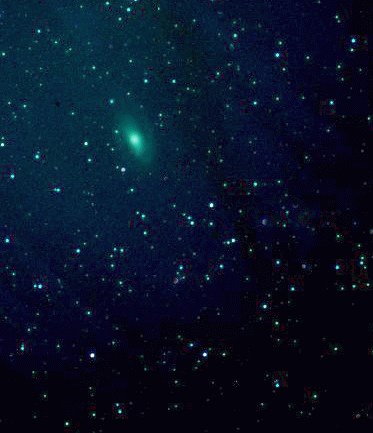
Enter comet Elenin XI, discovered in the fall of 2010 by a Russian amateur astronomer and confirmed later by NASA, this one will pass very close to earth in October of 2011. It is in a hyperbolic orbit and will never appear again after its close pass. The approach will be so close that earth may catch some debris from this celestial visitor. We already know that the earth will pass through the tail before the fateful close encounter. This in itself should give us a spectacular light show. But it's close approach later on has some astronomers worried that pieces will strike the earth at random and cause world wide havoc. This is conditioned on the possibility that the comet breaks up at perihelion and spreads out. As this comet is a new arrival into the inner solar system, it is relatively virginal, making a break up more feasible. If that occurs, one of more pieces from pebbles to pieces hundreds of meters across may strike. Due to mass and perturbation laws, it is more likely that we will see a lot of the smaller pieces in a fantastic meteor shower with a much lower probability for a larger hit. Some people are already well engaged in comet dread and spreading fear due to this one. There are some theories that even suggest that it is something else.
It has happened before. It will happen again. Our myths, legends and current system of beliefs have all been shaped of terrific events experienced in the past and within living memory, based on what we now know. We know that something struck in what is now north eastern Ontario or north west Quebec some 12,600 years ago. The evidence is via iridium and micro diamonds left in the ice cores of that era. When a threatening object approaches, what are we going to do about it? We must act on our fear and respond to any potential threat. We have the ability to do something about it, which has not been true up to this point in Earth's history. We can launch a counter attack and have made the first tentative steps by exploring comets and asteroids with space probes. Out of this knowledge will come a method as to the best approach. In addition, Earth crossing comets and asteroids form a rich resource base for future space explorers and developers.


